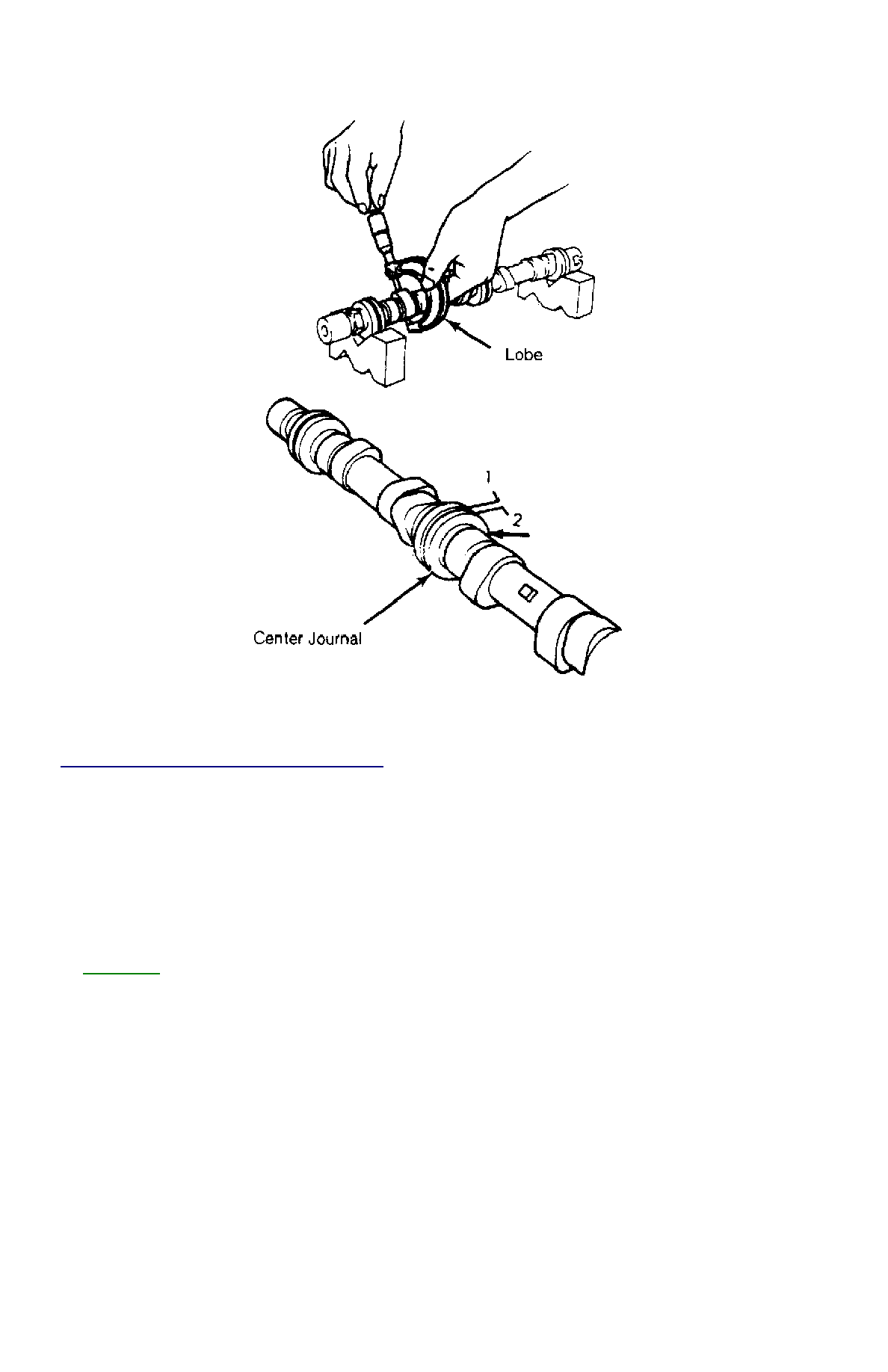Ford Festiva. Instruction - part 28

Fig. 7: Measuring Camshaft (1.3L Shown; 1.6L Similar)
Courtesy of FORD MOTOR CO.
CAMSHAFT END PLAY
1. Measure camshaft end play with thrust plate in position. Install dial indicator to front of head, with pointer on camshaft center. Pry
camshaft fully rear, and zero dial indicator.
2. Pry camshaft fully forward and note dial indicator reading. Standard end play is .002-.007" (.05-.18 mm) with a limit of .008" (.20 mm).
If end play exceeds specification on 1.3L engines, replace thrust plate and recheck end play. If end play is exceeded on 1.6L engines,
replace camshaft and/or cylinder head.
CAMSHAFT OIL SEAL
See
CAMSHAFT
.
REAR MAIN BEARING OIL SEAL
Removal (1.3L)
Remove transaxle. See TRANSMISSION REMOVAL & INSTALLATION article in TRANSMISSION SERVICING. Remove flywheel or
flexplate. Remove rear engine plate (if equipped). Remove rear main bearing oil seal retainer and press out rear main bearing oil seal.
Installation (1.3L)
Clean seal surface in retainer. Lubricate oil seal inside and outside. Install seal retainer on engine. Install seal in retainer with hollow side of
seal facing engine. Using Rear Main Seal Installer (T87C-6701-A), install rear main bearing oil seal. To complete installation, reverse removal
procedure.
Removal (1.6L)
Remove transaxle. See TRANSMISSION REMOVAL & INSTALLATION article in TRANSMISSION SERVICING. Remove clutch cover and
disc (if equipped). Remove flywheel or flexplate. Remove rear seal using Seal Remover (T78P-3504-N).
Installation (1.6L)
Lubricate oil seal lip with engine oil. Using Rear Main Seal Installer (T87C-6701-A) and Screw Set (T90P-6701-AH), install rear main